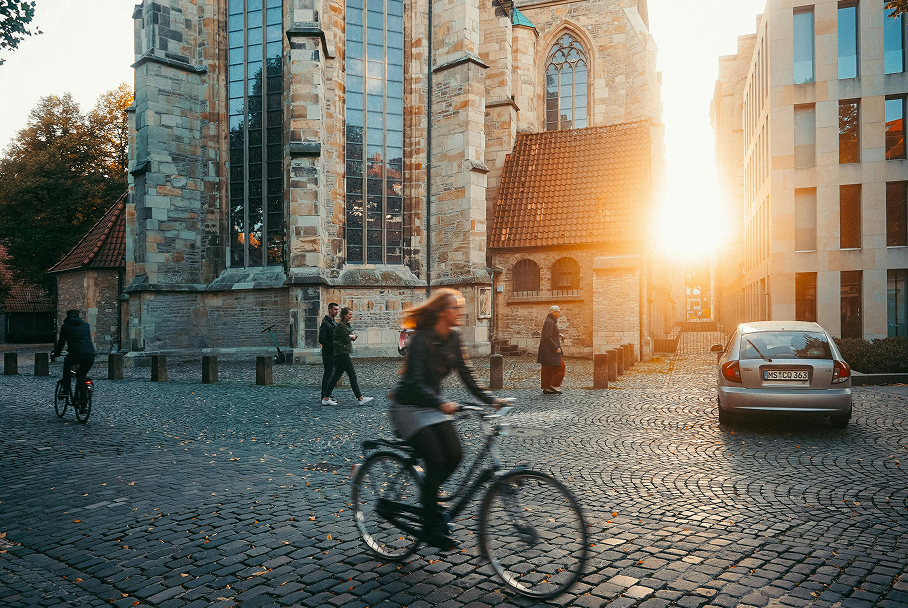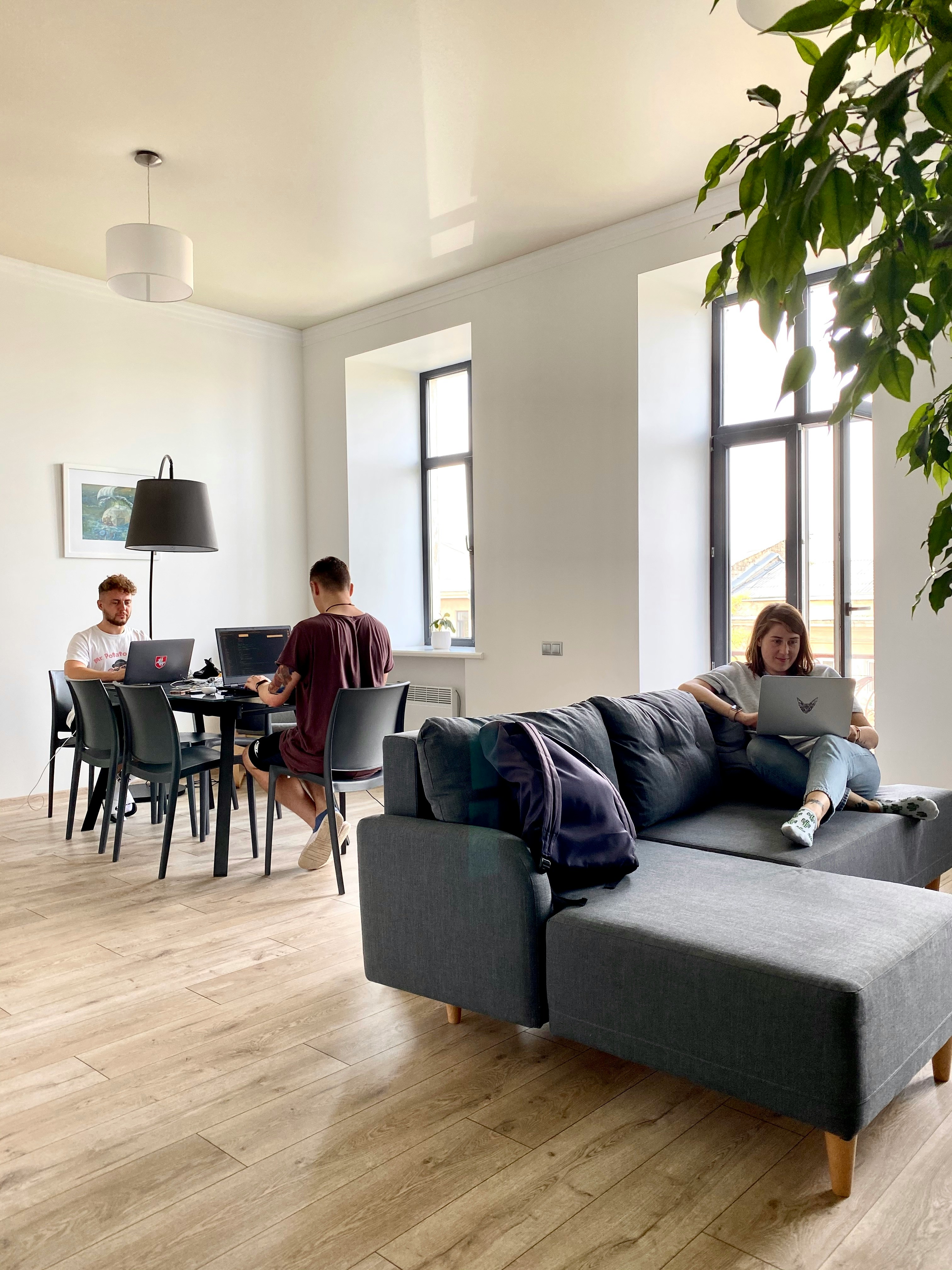Index
Receive our newsletter
Small, green, and full of youthful energy, Münster has become one of Germany’s most attractive cities. Located in the state of North Rhine-Westphalia, it combines history and modernity with ease. Thanks to its size and network of bike lanes, exploring it over a weekend feels effortless. The city invites you to disconnect and dive deeper into German culture through its many contrasts: traditional markets, world-class museums, cozy cafés, and peaceful natural areas.
Day 1: History and urban Life
The historic center is the ideal starting point. Prinzipalmarkt, Münster’s main street, unfolds in a series of Gothic façades rebuilt after World War II. Under its arcades, you’ll find family-run shops, bookstores, and small boutiques that preserve a sense of local identity. At the far end stands St. Paul’s Cathedral, a majestic building with an astronomical clock, one of the must-see stops in the city.
A few steps away, the Historic Town Hall recalls Münster’s diplomatic past, as it hosted the signing of the Peace of Westphalia in 1648, which ended the Thirty Years’ War. Today, guided tours reveal its historical importance and the beauty of its grand council chamber.
After a morning wandering cobblestoned streets, a well-deserved break awaits at one of the nearby restaurants. Many serve traditional German dishes made with regional ingredients, like handmade sausages or slow-cooked stews. For a lighter option, the cafés downtown offer salads, pastries, and excellent specialty coffee.
In the afternoon, the atmosphere shifts in Kuhviertel, the city’s liveliest district. Its narrow streets are filled with bars, breweries, and small theaters. Here, locals mingle with the many students who bring the city to life. Ending the day with a craft beer or some live music perfectly captures Münster’s friendly and laid-back personality.
Day 2: Nature and local life
Münster stands out not only for its history but also for its strong connection to nature. The Aasee, a large artificial lake just minutes from the center, offers a peaceful retreat surrounded by trees, walking paths, and lakeside terraces. Early in the morning, locals jog, row, or simply take a stroll. Renting a boat or sitting by the shore to enjoy the view is a simple yet rewarding experience.
Near the lake, you’ll find the Natural History Museum, with a dome that hosts astronomical shows, and the LWL Museum of Art and Culture, displaying works that range from the Middle Ages to contemporary times. For modern art enthusiasts, the Pablo Picasso Museum houses more than 800 lithographs by the Spanish artist, along with top-tier temporary exhibitions.
If your trip happens to fall on a Wednesday or Saturday, don’t miss the Wochenmarkt, the city’s weekly market held in the cathedral square. With more than 150 stalls offering fruits, cheeses, flowers, and freshly prepared dishes, it’s the perfect place to experience local life. Enjoying a smoked fish sandwich or a slice of apple cake while surrounded by residents doing their shopping is as authentic as it gets.
The afternoon is ideal for more exploration. Walk or cycle along the Promenade, a tree-lined circular avenue that borders the old town. It perfectly represents Münster’s sustainable way of life; thousands of cyclists use it every day. To close the day, return to the Aasee and watch the sunset from one of its terraces, a simple but cherished local tradition.
Where to eat and what to try
Although its cuisine is less known than that of other German regions, Münster surprises visitors with the quality of its local food. Among the typical dishes, Töttchen, a veal stew with onions and mustard, is a favorite during cold months. Also worth trying is Pumpernickel, a dark, slightly sweet rye bread often served at breakfast.
In the city center, you’ll find plenty of charming places to eat. Café 1648, located near Prinzipalmarkt, is famous for its homemade cakes, while Pinkus Müller, one of Münster’s oldest breweries, serves beer made following traditional recipes. Modern restaurants, meanwhile, blend international cuisine with local ingredients, reflecting the city’s youthful and open spirit.
Before you go: useful tips
Getting around Münster is simple. Public transport connects all major areas, though cycling remains the preferred way to travel. There are free parking areas and an easy bike rental system that makes moving around effortless. The city is flat and safe, so riding feels comfortable even for beginners.
If you’d like to learn how other German cities manage their transport systems, we recommend reading our article “Getting around Darmstadt: transportation, cycling, and travel passes” which explains ticket options, fares, and more.
When it comes to accommodation, the old town is home to small hotels and tourist apartments with great connections. For a quieter stay, the neighborhoods near the Aasee offer peaceful surroundings without being far from the center.
The weather can be unpredictable, so it’s a good idea to pack an umbrella, light clothes, and a jacket. Weekends tend to be lively, especially when open-air markets or cultural festivals take place.
Münster doesn’t need grand monuments to impress. The calm of the Aasee, the historic façades of Prinzipalmarkt, and its long-standing local businesses capture the city’s true essence, a place that blends history and authenticity, perfect for a weekend getaway.






.JPG)



